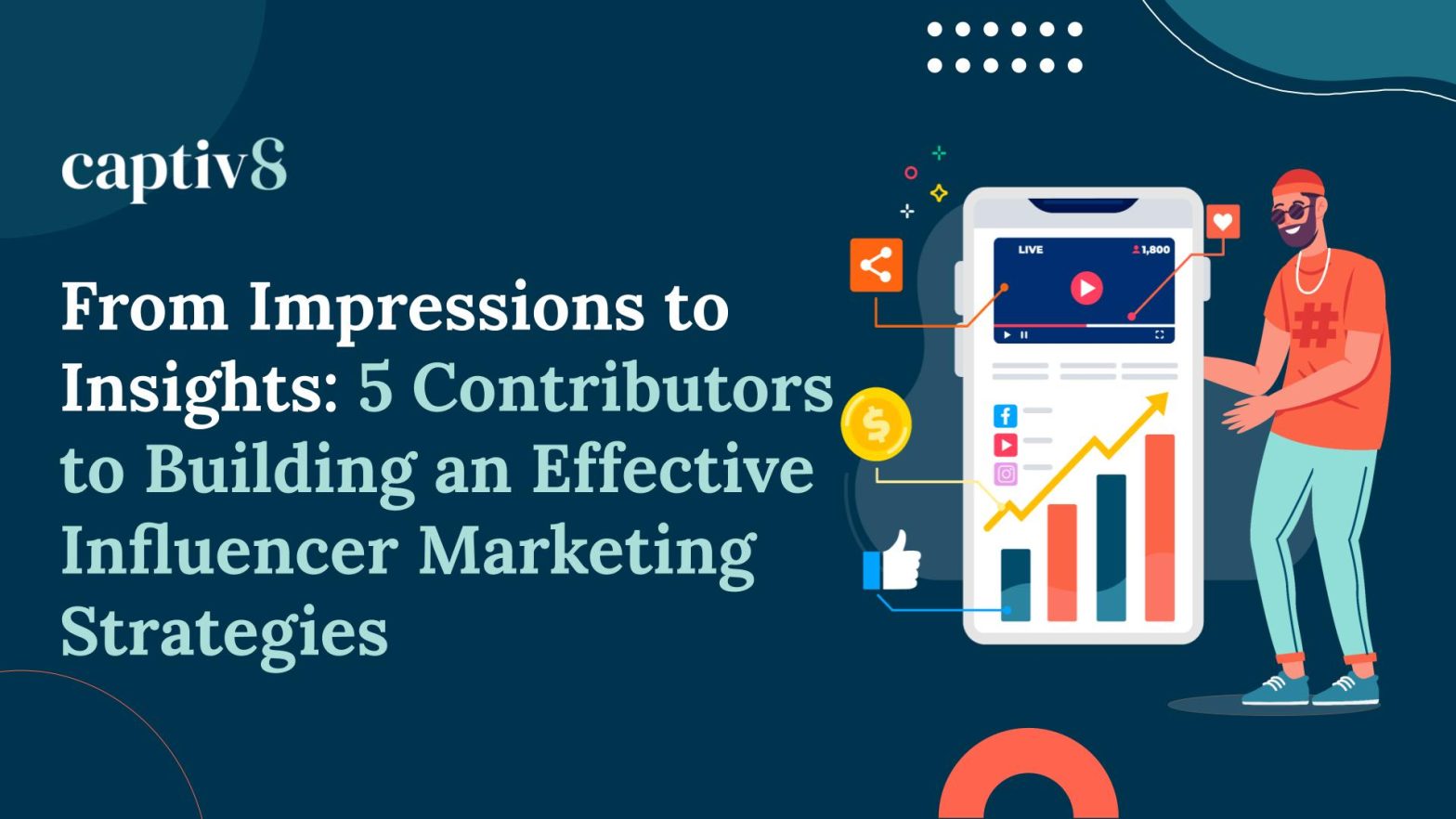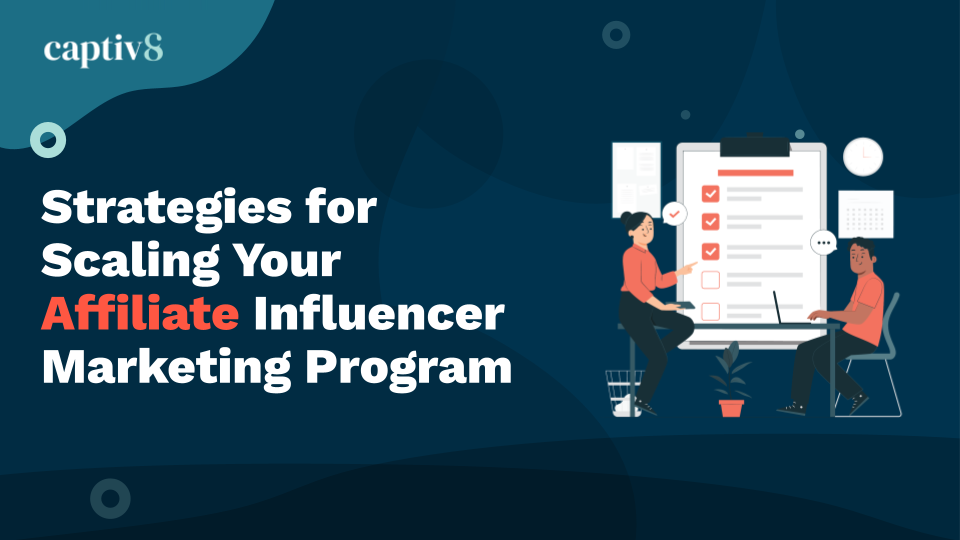From Impressions to Insights: 5 Contributors to Building Effective Influencer Marketing Strategies

In the age of social media dominance, influencer marketing has emerged as a powerful strategy to connect with target audiences and drive brand awareness, in fact, according to data presented by AugustaFreePress, brands are expected to spend $32.5 billion on influencer advertising in 2023. However, to ensure the success of influencer campaigns, it is crucial to implement effective measurement strategies. In this blog post, we will explore five proven influencer marketing strategies that not only generate impressions but also provide valuable insights. From establishing clear goals to leveraging data-driven analytics, here are five effective influencer marketing strategies to help you optimize your influencer marketing efforts and maximize ROI.
1. Define Clear Campaign Goals and Objectives:
Defining clear campaign goals and objectives is crucial for any marketing endeavor. Doing so, enables you to measure the effectiveness and overall success of your campaign. By setting specific, measurable, and achievable objectives, whether that is increasing brand awareness, driving website traffic, or even boosting product sales, you are essentially creating a benchmark against which you can evaluate the progress of your campaign. Monitoring your progress in comparison to your set objectives grants you the ability to reallocate resources if needed, and assists in making data-driven decisions to ensure the future success of the campaigns. Additionally, defining campaign goals and objectives assists in effective communication amongst the team working on boosting the success of your campaign, as everyone is working toward the same goals dictated. Well-defined goals create a clear understanding within the team and motivate them to achieve them.
2. Identify Relevant Key Performance Indicators (KPIs):
KPIs serve as an important metric to effectively measure the overall performance of your campaign. Whether it is measuring brand awareness, overall campaign reach, or conversions, identifying KPIs that are most relevant to your campaign will help you focus on and prioritize which aspects or metrics are contributing most to the performance boost of your campaign. This also grants you the ability to compare your campaign’s performance against competitors, industry standards, or even your own historical data. Identifying the most applicable KPIs also assists in revealing any room for improvement present and guides you in making informed adjustments as required. Consider using influencer marketing tech platforms like Captiv8 that allow you to customize and optimize KPIs that are pertinent to your campaign’s success and possible improvement. Identifying which KPIs are contributing factors to the campaign’s success gives you an opportunity to reallocate resources if needed, bringing you closer to meeting your set objectives.
3. Leverage Data-Driven Analytics:
Data-driven analytics assist in several ways to achieve the best outcome for your campaign. The first step that sets the tone of your influencer campaign is identifying the creator that aligns best with the campaign objectives and target audience. Analyzing relevant data such as audience demographics, engagement rates, reach, and content performance ensures a data-driven approach toward activating the creator that would generate the best results for your brand. Leveraging a creator discovery platform eases the process of having to curate a data-informed list of creators, and can help you understand what is necessary to consider when identifying and recruiting creators for influencer marketing campaigns.
Additionally, by tracking key metrics such as impressions, engagement, conversions, click-through rates, and other relevant indicators, you can assess the impact and ROI of your campaigns. This data helps you evaluate the success of individual creators, specific content, and overall strategies.
4. Implement Unique Tracking Links and Discount Codes:
Tracking links and discount codes enable you to measure the performance of your influencer marketing campaigns. By monitoring the usage and redemption of unique codes, or tracking the click-through rates and conversions from unique URLs, you can quantify the effectiveness of your influencer partnerships. By analyzing the expenses linked to the campaign and evaluating the revenue generated from unique tracking links or discount codes, you can gauge the financial effects of your influencer marketing campaign. This calculation of ROI highlights the profitability of the campaign and provides valuable insights for making data-driven decisions regarding future investments.
In addition, unique tracking links also assist in accurately attributing the success of the campaign to specific influencers. This can help you understand the impact of each creator’s contribution allowing you to make informed decisions regarding any future collaborations, and justifying appropriate compensation for their efforts.
5. Embrace the Power of Brand Sentiment and Customer Feedback:
Measuring the impact of influencer marketing goes beyond quantitative metrics. Monitoring brand sentiment and customer feedback is vital for understanding the qualitative impact of your campaigns. Customer feedback obtained through influencer marketing campaigns can provide valuable insights about your target audience as well. By analyzing comments, reviews, and conversations sparked by creators and their content, you can gain a deeper understanding of customers’ preferences, needs, and pain points. This knowledge helps you refine your marketing strategies to deliver a better customer experience. It is also vital to assess the sentiment and engagement generated by specific influencers’ content, this way you can identify which influencers are effectively resonating with the audience and positively impacting brand sentiment. This information just like the implementation of unique tracking links and discount codes can guide future creator activations.
Conclusion:
Influencer marketing has revolutionized the way brands engage with consumers, but measuring its effectiveness is equally important. By implementing these five effective influencer marketing strategies, you can transform mere impressions into actionable insights. Clearly defining goals, identifying relevant KPIs, leveraging data-driven analytics, implementing unique tracking links and discount codes, as well as monitoring brand sentiment will enable you to optimize your influencer campaigns and maximize the ROI.
The success of influencer marketing lies not only in reaching a wide audience but also in generating meaningful engagement and driving tangible results. By embracing these strategies and continuously evaluating your influencer marketing efforts, you can build a solid foundation for long-term success and effectively measure the impact of your influencer partnerships.
Incorporating these effective influencer marketing strategies into your campaigns will elevate your brand’s visibility, enhance audience engagement, and drive valuable insights. Stay ahead of the competition by optimizing your influencer marketing initiatives and leveraging data to unlock the true potential of influencer partnerships. Consider utilizing an all-in-one platform like Captiv8 to efficiently collect and measure the data you need to maximize the success of your influencer marketing campaign. Take a platform tour to find out more!
![How Brands Can Set Up Influencers for Affiliate Marketing Success [On-Demand Webinar Recording] Affiliate Marketing Strategy](https://captiv8.io/wp-content/uploads/2023/04/230403_captiv8x_affiliate_webinar_banner_v1.jpg)

![Elevate Your CPG Marketing: Influencer Marketing Strategies for the 2023 Fall & Holiday Season [Download] CPG Influencer Marketing](https://captiv8.io/wp-content/uploads/2023/10/231026_captiv8x_CPG_banner_image.jpg)
